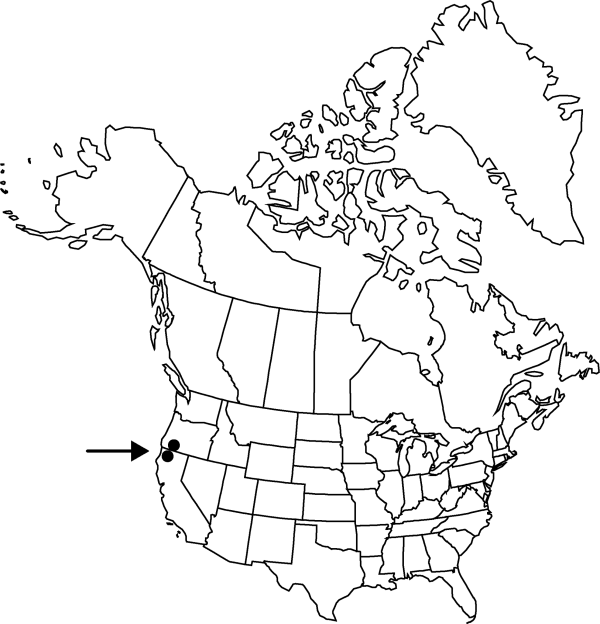Lewisia oppositifolia
in A. Gray et al., Syn. Fl. N. Amer. 1: 268. 1897.
Taproots gradually ramified distally. Stems erect, basal nodes underground, 10–20 (–25) cm. Leaves: basal leaves withering at or soon after anthesis, abruptly narrowed into broad petiole, blade linear-spatulate to linear-oblanceolate, flattened, 4–11 cm, margins entire, apex obtuse to subacute; cauline leaves opposite, in 1–3 pairs near stem base, smaller than and similar to basal leaves. Inflorescences racemose to subumbellate cymes, (1–) 2–5 (–6) -flowered; bracts alternate proximally, 1–many at each flowering node distally, lanceolate, 4–8 mm, margins entire or toothed at apex, apex acute to acuminate. Flowers pedicellate, not disarticulate in fruit; sepals 2, suborbiculate, 4–8 (–10) mm, herbaceous at anthesis, margins coarsely toothed but not glandular, apex obtuse to rounded; petals 8–11, pink fading to white, oblanceolate to obovate, 9–15 mm; stamens 8–18; stigmas 3–5; pedicel 20–75 mm. Capsules 5–6 mm. Seeds 5–15, 1–1.8 mm, shiny, smooth.
Phenology: Flowering spring.
Habitat: Decomposed serpentine substrates
Elevation: 300-1300 m
Discussion
Lewisia oppositifolia is known only from Del Norte County, California, and Josephine County, Oregon.
The floral symmetry of Lewisia oppositifolia may be somewhat elliptical, the outer two petals alternating with the sepals and the remaining petals imbricate and opposite the sepals, giving the flowers a pinched appearance, a feature also reported for L. nevadensis. The more diminutive, higher-elevation plants of L. oppositifolia possibly represent a distinct taxon that has been informally recognized as “Lewisia richeyi” (B. Mathew 1989b).
Selected References
None.
Lower Taxa
"broad" is not a number."broad" is not a number.
